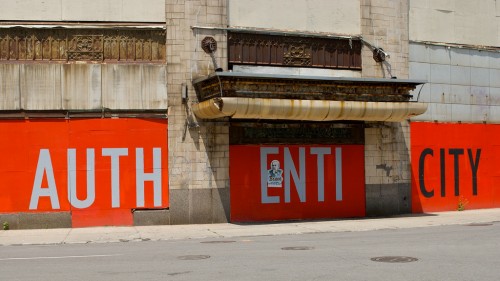Authenticity is a tricky animal, and social media complicate the matter. Authenticity is that which seems natural, uncalculated, indifferent to external forces or popular opinion. This sits in tension with the performativity of everyday life, in which people follow social scripts and social decorum, strive to be likeable—or at least interesting—and constantly negotiate the expectations of ever expanding networks. The problem of performance is therefore to pull it off as though unperformed. The nature of social media, with its built-in pauses and editing tools, throw the semblance of authenticity into a harsh light. Hence, the widespread social panics about a society whose inhabitants are disconnected from each other and disconnected from their “true selves.”
For political campaigns, the problem of authenticity is especially sharp. Politicians are brands, but brands that have to make themselves relatable on a very human level. This involves intense engagement with all forms of available media, from phone calls, to newspaper ads and editorials, to talk show appearances, television interviews and now, a social media presence. The addition of social media, along with the larger culture of personalization it has helped usher in, means that political performances must include regular backstage access. Media consumers expect politicians to be celebrities, expect celebrities to be reality stars, and expect reality stars to approximate ordinary people, but with an extra dab of panache. The authentic politician, then, must be untouchable and accessible, exquisite and mundane, polished yet unrehearsed. Over the last couple of elections, social media has been the primary platform for political authenticity. Candidates give voters access to themselves as humans—not just candidates—but work to do so in a way that makes them optimally electable. It’s a lot of work to be so meticulously authentic.
This is why political authenticity requires robust PR teams. Political campaigns are hyperperformative, making the politician’s image of authenticity spectacularly calculated. The Clinton campaign includes marketing experts from Coca-Cola and the advertising agency GSD&M; Jeb Bush’s team includes a full media staff, including a communications director, press secretary, and head of media relations; Bernie Sanders, whose brand is arguably the “un-brand,” has the firm Revolution Messaging behind his social media image. Interestingly, (but not surprisingly) I had to dig for this information in ways I didn’t have to with other candidates. When your brand is the un-brand, your team quickly deletes information about PR on your Wikipedia page; And Donald Trump, in an ironic and oddly brilliant move, maintains authenticity by owning his brand status. Perhaps this strategy was suggested by his ever-present Media Handler, Hope Hicks.
Importantly, political hyperauthenticity relies upon a compliant audience. The performativity of political campaigns is an open secret, balancing between cynical recognition and practical denial. We know the performance for what it is, but allow the performance to go off as though spontaneous. Indeed, we insist upon it. This is what sociologist Erving Goffman calls “tact” and it’s a practice that, for good reason, pervades everyday life. Tact facilitates smooth interaction and helps us fumbling social actors avoid embarrassment. It’s how we manage to carry on, even after someone trips, farts, misspeaks, or leaves spinach in their teeth. The maintenance of political theater requires audiences to dig deep into their reservoirs of civil inattention. Political theater requires hypertact.
The masterful craft of political campaigns is common knowledge. We all realize that Bernie Sanders entered last week’s debate with “sick and tired of hearing about your damn emails!” ready made in his quote bag. In this way, we didn’t expect Rand Paul’s 24 hour livestream to contain illegal, immoral, or even revealing content. We expected it to contain coffees, bad jokes, small talk, and mussed hair. We expected it to be boring with spurts of amusement, and the Paul team delivered. The most dramatic moment was Paul’s reference to the “dumbass livestream,” which quickly became a t-shirt slogan and press release from his team. “Look at how authentic Rand Paul is!! He said an unpolished thing!!”
However, despite extensive teams and apparent audience complicity, candidates’ social media use sometimes allows nuggets of ill-crafted content to seep through, and well-crafted resistance to break in. People didn’t find it cute when Clinton asked them to tweet emojis about student debt. People did find it funny, however, to watch Ted Cruz botch his first attempted response to Obama’s State of the Union address. And the people running Carlyfiorina.org took advantage of an unregistered domain name to highlight the number of workers laid off at HP under Fiorina’s leadership. Social media is therefore a tool of the powerful, bolstered by citizens’ tact, but it is also a tool that contains unique vulnerabilities. The opportunity to screw up is ever available, and when it happens, it doesn’t go away. It can loop on vine, spread through retweets, it can become a meme. In candidates’ digitally mediated quest for hyperauthenticity, social media can also, despite itself, occasionally pull back the curtain. And when the curtain pulls back, we pounce, lest the sham of the entirety be revealed.
Jenny Davis is on Twitter @Jenny_L_Davis
Pic via: Source

